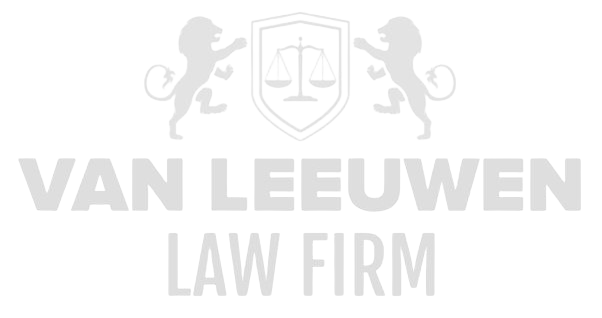Corporate investigations and internal compliance constitute an essential component of contemporary corporate management, where legal frameworks, organizational structures and technological instruments converge to mitigate risks and prevent reputational harm. Organisations operate in an increasingly complex regulatory environment in which both international and domestic legislation — including privacy regulations, anti-corruption standards and financial supervisory requirements — have a direct impact on the capacity to conduct internal investigations effectively. Structuring internal investigations adequately is therefore not merely a matter of process optimisation; it is a fundamental legal obligation in which the balance between the rights of affected individuals, the expectations of external regulators and the need for swift and reliable evidence collection plays a central role.
The need for a robust compliance and investigative framework is further reinforced by the growing complexity of digital data flows and the global nature of corporate activities. Digital evidence collection, document preservation and the deployment of advanced forensic techniques have become integral elements of legal compliance and represent a critical mechanism in defending against both internal and external claims. Establishing structured internal reporting channels, developing strategies for cross-border compliance and anticipating potential interventions by regulators and judicial authorities are no longer optional but essential to safeguarding integrity, accountability and operational continuity.
Legal Frameworks for Internal Investigations (Privacy, Proportionality, Right to Be Heard)
Conducting internal investigations requires a clear understanding of the applicable legal frameworks, particularly in the domains of privacy and data protection, proportionality and the principles of hearing both sides. Privacy legislation, including the General Data Protection Regulation (GDPR), imposes strict obligations regarding the processing of personal data belonging to employees, customers and other stakeholders. Every step in an investigation must be weighed carefully against the necessity and proportionality of the data processing. This requires a detailed assessment of which data are collected, how the data are stored, who has access to them and for what purposes they are used.
The principle of proportionality serves as an essential legal tool to ensure that measures taken during internal investigations remain commensurate to the objective pursued. Proportionality requires that interventions — such as accessing email communications or conducting digital forensic scans — are limited to what is strictly necessary for investigating a suspected infringement or irregularity. These assessments must be documented meticulously to enable regulators or courts to evaluate the reasonableness and lawfulness of the investigative process, if required.
Applying the principle of hearing both sides is inseparable from safeguarding the fundamental rights of individuals who are implicated in an internal investigation. This principle ensures that individuals who are the subject of an investigation, or whose actions or responsibilities are under examination, are provided with the opportunity to present their views before conclusions are drawn. This process is essential to ensuring a fair and careful investigation and simultaneously offers protection against potential claims of unlawful treatment or violations of privacy rights.
Forensic Investigation and Digital Evidence Collection
Forensic investigation in a corporate context encompasses a wide spectrum of activities aimed at identifying, securing and analysing digital and physical evidence. Digital evidence collection requires specialised knowledge of IT infrastructures, network protocols, storage media and the legal rules governing electronic evidence. When collecting digital data, constant attention must be paid to ensuring the integrity and authenticity of the information, as deficient procedures may severely undermine the evidentiary value in a judicial setting.
The use of advanced forensic techniques — such as data carving, metadata analysis and audit-trail assessments — enables organisations to detect concealed or manipulated data. These methods require a systematic and methodical approach, with the chain of custody recorded with precision. Ensuring complete traceability of digital data is crucial to the organisation’s defensive and proactive legal strategy, particularly in circumstances where external regulators or judicial authorities become involved.
Collaboration with internal IT specialists and external forensic experts plays a vital role in maximising the efficiency and reliability of digital evidence collection. Establishing protocols and training personnel in forensic procedures reduces the risk of errors that could compromise the credibility of evidence. Moreover, a structured approach to digital forensic investigations enhances compliance with privacy legislation and other regulatory obligations, as all actions remain traceable, proportionate and legally justified.
Document Preservation and Legal Hold Procedures
Document preservation and legal hold procedures are indispensable components of an effective internal investigation. These procedures aim to safeguard relevant documents and electronic files as soon as there is an indication of irregularity or a potential legal dispute. Timely and systematic implementation of legal hold measures prevents crucial evidence from being lost or altered, which is essential for both internal reporting and external proceedings.
The process of document preservation requires a careful inventory of all potential sources of relevant information, including email correspondence, internal memoranda, contracts, financial reports and digital logs. This inventory must be accompanied by clear instructions to all involved parties regarding the retention of documents, including restrictions on deleting, altering or sharing information. Only through a complete and traceable preservation process can an organisation ensure the integrity of information and demonstrate that the investigation has been carried out correctly and professionally.
Legal hold procedures must also be integrated into broader compliance and risk-management mechanisms. This encompasses coordination with external legal advisors, monitoring internal adherence and documenting each step of the process. An effective document preservation framework not only mitigates legal risks but also strengthens the confidence of regulators, shareholders and other external stakeholders in the organisation’s credibility and reliability.
Cooperation with External Regulators and Judicial Authorities
A successful corporate investigation often requires close interaction with external regulators and judicial authorities, where transparency, timely reporting and legal precision are of paramount importance. External regulators — such as national data protection authorities or financial supervisory bodies — have specific expectations regarding the conduct and documentation of internal investigations. Understanding these expectations and developing protocols that align with them constitutes an essential component of strategic compliance and risk mitigation.
Engagement with judicial authorities introduces additional complexity, particularly due to the tension between the obligation to cooperate and the need to protect confidential business information. Organisations must carefully assess what information is shared, in what format and under which conditions, to fulfil legal obligations without compromising internal confidentiality or strategic interests. Coordinated oversight by legal counsel is crucial to avoiding sanctions, reputational damage or loss of evidentiary value.
Establishing formal communication channels and training employees involved in interactions with regulators and judicial authorities plays a decisive role. Documenting all communication, ensuring consistency in the information provided and implementing internal controls for compliance with reporting obligations contribute to a structured and defensible posture during external investigations. These measures enable organisations to limit the risk of escalation while maintaining their reputation as legally and ethically responsible entities.
Cross-border compliance and conflict of laws
The international nature of modern business operations creates a complex interplay of legal systems, with cross-border compliance at its core. Organizations often operate in multiple jurisdictions, each with its own legal frameworks governing privacy, data protection, anti-corruption, competition law and financial reporting. Failure to adequately manage this legal plurality can lead to significant legal, operational and reputational risks, ranging from fines and sanctions to severe restrictions on commercial activities.
The phenomenon of conflict of laws plays a central role in this context. When national legal systems overlap or contradict each other, a legal tension arises that requires careful and informed legal judgment. This necessitates a detailed analysis of which rules apply as the primary legal basis and which obligations take precedence. For example, cross-border transfers of employee or customer data require an assessment of both EU law and the national law of non-EU countries. Developing protocols that systematically identify and address such conflicts is essential for ensuring legal certainty.
Continuous monitoring of international legal developments is equally critical. Jurisdictions frequently amend legislation, and supervisory authorities regularly refine their interpretations, compelling organizations to adjust their compliance programmes dynamically. Training legal and compliance teams, documenting decisions and maintaining thorough risk assessments are at the core of a robust cross-border compliance strategy. Only an integrated approach can ensure that international activities remain compliant with both local and supranational law.
Internal reporting channels and anonymous whistleblowing systems
Internal reporting channels and anonymous whistleblowing systems are essential tools for the early detection of irregularities within an organization. These mechanisms enable employees, suppliers and other stakeholders to confidentially and securely report suspicions of fraud, corruption, conflicts of interest or other compliance-related issues. Effective implementation and maintenance of such systems require not only technical infrastructure but also legal and organizational safeguards to ensure anonymity and protect the whistleblower.
The design of reporting channels must be carefully aligned with applicable legislation, including the European Whistleblower Protection Directive and its national implementations. This entails ensuring that reports are appropriately received, registered and investigated while safeguarding the rights of involved parties and individuals under scrutiny. Creating clear procedures for follow-up and investigation is essential for preserving the effectiveness and credibility of the reporting system.
A robust whistleblowing system also contributes to a culture of transparency and integrity within the organization. Taking reports seriously and handling them conscientiously strengthens trust among employees and external stakeholders. Regular system evaluations, training of responsible personnel and communication of results — without disclosing confidential information — ensure that the reporting mechanism is not merely a formality but a strategic instrument for early risk mitigation.
Strategy for dawn raids and on-site investigations
Dawn raids and on-site investigations conducted by supervisory or judicial authorities are high-risk situations that demand a well-designed and comprehensive strategy. Such a strategy begins with preparation, including the establishment of internal protocols, crisis teams and legal advisory structures. Identifying key individuals within the organization who will act as points of contact during the investigation is essential to ensure a coordinated and legally sound response.
During an on-site investigation, the organization must balance cooperation with the protection of its business interests. Employees must be trained in their rights and obligations, including the right to legal representation and the limits of information disclosure. At the same time, it must be ensured that relevant documents and electronic data are accessible and that document preservation procedures and chain-of-custody requirements are rigorously followed to avoid compromising the integrity of evidence.
Developing a post-raid strategy is just as important as the initial response. This includes an internal review of how the investigation was conducted, documentation of interactions with authorities and an assessment of potential implications for ongoing internal investigations and compliance programmes. A structured evaluation enables the organization to identify lessons learned and enhances preparedness for any future on-site investigations.
Reporting obligations versus confidentiality obligations
Organizations frequently face tensions between the duty to report information to supervisory authorities or internal governance bodies and the legal obligation to maintain the confidentiality of sensitive information. Reporting obligations may stem from statutory requirements, contractual commitments or internal compliance policies and often include the timely reporting of irregularities, incidents or risks. At the same time, disclosure without appropriate safeguards may lead to breaches of confidentiality, loss of strategic information or legal liability.
Balancing reporting and confidentiality obligations requires a thorough understanding of applicable laws, including competition law, data protection regulation and contractual duties. Every decision regarding information disclosure must be documented and substantiated so that the organization can demonstrate that the interests of affected parties and its own business interests have been appropriately balanced. Establishing internal approval procedures and escalation mechanisms is an essential safeguard for legal certainty.
Effective compliance with these obligations also requires an integrated approach, where legal advisers, compliance officers and operational leaders collaborate to ensure a consistent and legally sound framework. Regular training and awareness initiatives reinforce employees’ understanding of the boundaries of reporting and confidentiality and help prevent incidents arising from improper information sharing.
Risk-based due diligence in supply chain cooperation
Risk-based due diligence in supply chain cooperation is a strategic instrument for identifying and mitigating potential compliance and reputational risks associated with partners, suppliers and other stakeholders. The process requires a systematic assessment of risks in areas such as corruption, sanctions, human rights, environmental obligations and data protection. By aligning the intensity and scope of due diligence with the risk profile of the partner or activity, an organization can deploy its resources effectively while limiting legal liability.
Conducting due diligence involves gathering information from public sources, internal databases and third-party audits. Analysing this material makes it possible to identify patterns of risk behaviour and take preventive measures before the cooperation exposes the organization to escalation. The process must be periodically reviewed and documented so that, in the event of scrutiny by regulators or external auditors, the organization can demonstrate that a careful and proportionate approach has been applied.
Moreover, risk-based due diligence must be integrated with broader contractual and operational mechanisms. This includes incorporating specific compliance and audit clauses into agreements, monitoring adherence throughout the duration of the partnership and training internal stakeholders to identify and mitigate supply chain risks. Such a systematic and proactive approach not only strengthens the organization’s compliance posture but also contributes to fostering sustainable and responsible collaboration throughout the entire value chain.
Training and awareness as a preventive measure
Training and awareness constitute the cornerstone of an effective preventive compliance and internal investigation programme. Establishing structured training programmes for employees at all levels is essential to creating awareness of applicable laws and regulations and to promoting appropriate conduct within daily business operations. Effective training does not solely focus on theoretical knowledge—such as legal obligations relating to data protection, competition law and anti-corruption measures—but also emphasizes practical application, including scenario-based exercises and simulations of potential compliance incidents.
A systematic approach to awareness requires the organization to continuously monitor emerging risks and legal developments and to translate these into training content that is relevant for different audiences. Senior management, operational teams and compliance officers each face different responsibilities and exposures, making it necessary to tailor the content, frequency and intensity of training to their specific role and risk profile. Through the use of interactive learning methods, assessments and feedback loops, it can be ensured that knowledge is not merely transferred but is actively applied in day-to-day decision-making and operational processes.
In addition, training and awareness contribute to a culture of integrity and proactive compliance, enabling the early identification and mitigation of potential incidents. Implementing continuous awareness campaigns, internal communication on relevant cases and highlighting compliance-related success stories strengthens the perception of compliance as a strategic priority within the organization. This fosters a preventive dynamic in which employees do not simply respond to incidents but actively contribute to minimizing risks and safeguarding the organization’s reputation and operational continuity.













